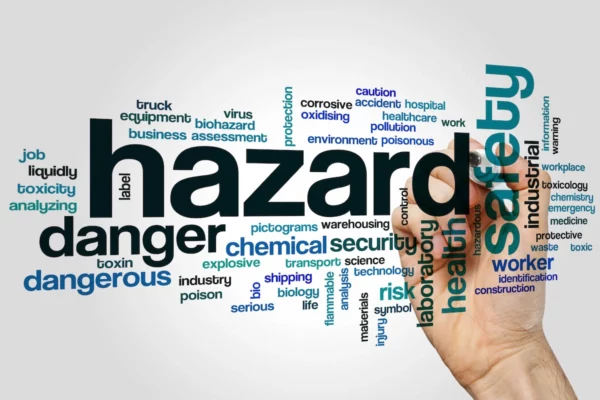According to the U.S. Bureau of Labor Statistics1, in 2020 there were 2.7 million reported nonfatal workplace injuries and illnesses. Typically, no one wakes up thinking they will be injured at work any given day. Accidents do not “just happen.” For every accident that occurs there is a cause.

A common “root cause” of workplace injuries, illnesses, and incidents is the presence of unrecognized hazards that could have been anticipated. A critical element of any effective safety and health program is a proactive, ongoing process to identify and assess such hazards.
How do we identify hazards in the workplace?
Keep your mind on task! Understand what is happening around you and concentrate on the task at hand. There are always multiple things vying for your attention. However, a lack of focus on the task at hand can lead to tragedy, especially in higher risk situations. A leading cause of work-related accidents is contact with objects, which include being struck against an object, struck by an object, caught in an object or equipment, or caught in collapsing material.
Avoid Safety Shortcuts! When team members feel pressured to meet a goal, they may pay less attention to safety. This often causes team members to make poor choices that put themselves and fellow team members at risk. Incidents such as these have a negative impact because not only do they halt production causing lost time, but also affect team member morale and lessen confidence in the safety of the work environment.
Plan Ahead! It is everyone’s responsibility to work safely, and that means taking time to review what is to be done and what could go wrong. All team members should make it a habit to check the work area before beginning work and ensure the work can be completed without mishaps.
Ask Questions! Below are some examples of questions to ask that may help predict what could go wrong and how hazardous situations might be controlled:
- Has anything changed in the way you perform the work?
- Are the necessary materials available to perform the work?
- Does everyone have the proper tools to perform the tasks at hand?
- Are there enough workers to handle the job? Have they all had safety training?
- Are environmental conditions such as light, noise, and weather a factor?
- Are there too many people in the area to work safely?
- Have other team members on the job been notified about hazardous tasks or materials?
- Are chemicals being used? If so, has the Safety Data Sheet been reviewed and is there direct contact?
- Is there any exposure to electrical hazards?
- Is there a risk of repetitive motion injury?
- Is there anything that could cause a slip, trip/fall?
- Do we need to lock and tag the equipment to perform the task?
- Do we have the proper Personal Protective Equipment (PPE) for the task?
- Is this a confined space?
Prior Planning Prevents Poor Performance!
1Employer-Reported Workplace Injuries and Illnesses – 2020 (bls.gov) — https://www.bls.gov/news.release/pdf/osh.pdg





